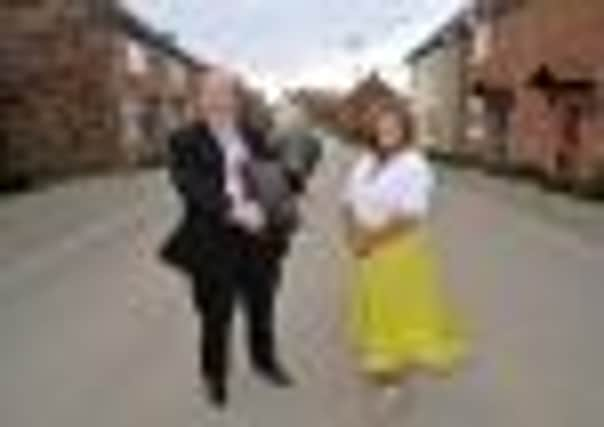Ghosts from Butlin’s past


There was an era when Colin “Rocky” Mason and his colleagues delighted in squashing romance, regardless of whether moonlight was silvering Filey Bay. In ballrooms throughout the land no enchanted evening was complete without the last waltz. But in another – was it the Regency or the Princess? – those who wore a uniform of red and white and fixed smiles provided a different finale. They linked arms, kicked their legs from side to side, and sent dancers into the night with a song reminding them of where they were.
The melody was that of Goodnight, Sweetheart, a hit tune from the 1930s; the adapted lyrics left something to be desired:
Goodnight Campers, I can see you yawning,


Goodnight Campers, see you in the morning.
You must cheer up or you’ll soon be dead,
‘Cause I’ve heard it said, that folks die in bed.
So I’ll say Goodnight Campers, don’t sleep in your braces,
Goodnight Campers, soak your teeth in Jeyes-es,
Drown your sorrows, bring your bottles back tomorrow,
Goodnight Campers, Goodnight!
Advertisement
Hide AdAdvertisement
Hide Ad“Ah, yes, I remember it well, and how we eventually replaced it with Vera Lynn’s We’ll Meet Again. Wonderful times, a wonderful job,” says Mason, now 81, and a pillar of Sir Billy Butlin’s holiday camp empire for 30 years. For half that time he served at Filey, “the flagship of the fleet and Sir Billy’s largest and favourite site”.
It had its own railway line and at its peak catered for 12,000 holidaymakers each week, their collective identity evolving from “campers and lads and lasses” into “guests and ladies and gentlemen” as the management, grudgingly you suspect, adapted to changing social trends.
Mason, originally from Idle, Bradford, arrived in 1957 as a boxing instructor, became chief redcoat and was the entertainment supremo by the time foreign package holidays contributed to the closure of Butlin’s at Filey in 1983.
Its contribution to the culture and economy of the Yorkshire seaside was untold, measured best perhaps by personal memory banks and the snapshots in countless family albums.
Advertisement
Hide AdAdvertisement
Hide AdOfficial recognition has been grudging and it’s been left to those who served the holiday camp king in their prized redcoat uniform to remember the Hi de Hi! days there. Today, some of the 200 former staff gathering on the coast for a reunion will be at the unveiling of a plaque on the now redeveloped site where Butlin began building his camp on 120 acres bought from local farmer John Milner. The Second World War intervened and it became RAF Hunmanby Moor, eventually opening for the final weeks of the 1945 season when the first campers arrived with their ration books. The era of “a week’s holiday for a week’s wage” for the masses took hold and in the process launched the careers of many who entertained them. Dave Allen, Des O’Connor and Charlie Drake were among the Filey redcoats.
Another was Tony Peers, “still the world’s greatest unknown comedian,” as he describes himself, and who now runs a production company based in Scarborough.
“The talent and variety shows, the glamorous granny, knobbly knees and beauty contests, all of it, was a priceless apprenticeship for showbusiness. Everything I know about people and audiences I learned at Butlin’s,” said 65-year-old Peers.
“It taught you how to deal with folk from all walks, and kids of course. We were expected to smile constantly. When you got home it took 20 minutes to wipe it off your face. Being a redcoat gave us celebrity status on £7-a-week. Within the camp that uniform made you someone special. The public recognised how hard we worked to provide a good time – you were on parade from just after eight in the morning until midnight – and people were encouraging even when your performance as a compere wasn’t top-notch. You became their friends for a week – sometimes a lot closer than their friends. A lot of ladies pursued the redcoats.
Advertisement
Hide AdAdvertisement
Hide Ad“Then there were the sometimes chaotic scenes off-stage. Along with a blazer and slacks you had to wear white shoes. They were expensive so I painted mine. That was fine until the day I used gloss instead of matt and trailed white footprints everywhere. Some guests probably thought it was all part of the act.
“Butlin’s got in your blood. Those like Rocky Mason lived and breathed the ethos. Hi de Hi!’s depiction of holiday camp life was spot on. All of us recognised real life colleagues in the TV show’s characters. Every Butlin’s had its Ted Bovis, Spike, Gladys and Peggy and snooty dancing instructors, and it was even true that not all redcoats were fond of children.”
It’s a fair assumption that Sir Billy would no longer recognise the site he bought for £12,000. That would now buy him no more than a summer-long break in one of the three-bedroom cottages or a New England style beach house at The Bay, a £120m development.
The plaque to Sir Billy is on the wall of the entrance to The Bay’s pub, though the John Paul Jones can’t boast, like one of its predecessors on the site, a mention in the Guinness Book Records for having the longest bar in the world.